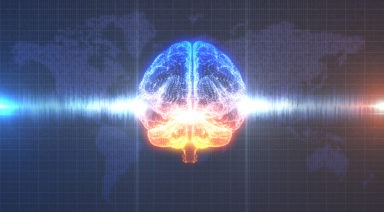Is It Possible to Attain Yogic Superpowers?

Stories of highly devout and enlightened yogis having psychic or physical superpowers are not uncommon in India. The ability to fly, levitate, garner superhuman strength or effect telekinesis are all supposedly attainable abilities if one spends years meditating and practicing yoga. These abilities are described in Patanjali’s Yoga Sutras and are referred to as the Siddhis. While achieving supernatural power sounds enticing, it is precisely for that reason why they are to be approached with caution.
When Siddhis are described by swamis or those who are well-versed in Vedic knowledge, they are spoken of as not actually being magical in any sense. These powers, which seem to be otherworldly, are actually inherent in all human beings and can be accessed with the proper discipline. Some people are even born with these powers, specifically when it comes to psychic abilities.
But these yogic abilities are thought to be a distraction and waste of time for those who are seeking a path to enlightenment. Getting distracted by these powers can lead people to worship the yogi and inflate their egos. Subsequently, it can prevent the yogi from realizing god and oneness with the universe.
Patanjali’s Yoga Sutras
According to the Sutras, once a yogi attains Samadhi or the state of divine union with meditation, there are several ways one can attain Siddhis.
-
- Birth or Genetics – Due to one’s karma they may be born with psychic abilities.
- Herbs – Psychedelic drugs like mescaline or peyote can induce Siddhis, however they must be done under the supervision of a spiritual guide or with the proper knowledge.
- Mantras – This is the rational and desired method of attaining Siddhis paired with austerity and the repetition of mantras, basic or sometimes esoteric.
- Birth or Genetics – Due to one’s karma they may be born with psychic abilities.
Through these primary methods, one can gain abilities including:
- Becoming invisible
- Becoming as big or small as one desires
- Becoming as heavy or light as one desires
- Flying and levitating
- The power to manifest and control things
- The power to be in more than one place at once and more.
There are also psychic powers associated with Siddhis including telepathy, clairvoyance, psychokinesis, and precognition.
While these practices might sound otherworldly, Vedic teachers say they are not as bewildering as they sound. Much like the invisible phenomena in our everyday world, these powers represent realms that are pervasive around us, but not necessarily visible or obvious in our everyday state of consciousness. Because our reality is a product of our consciousness, according to Vedic philosophy, these powers can obviously be manifested by us.
When a yogi reaches the level of attaining these powers, they are said to have reached Samyama. It is a deeply absorbed meditative state where the mind is cleared from wandering thought—a state most people strive to attain just for short periods of time. For advanced yogis this state can be achieved for hours at a time, at which point their mind merges with the mind(s) of other yogis, eliminating the illusion of separation and showing universal oneness. This is the point where yogis can become either distracted by the powers of Siddhis or continue toward a path of enlightenment.
Psychic Abilities May Stem From a Field of Consciousness

Ever have the feeling that you know you’re being watched? Or the feeling of thinking about someone just before they call? Some believe these feelings are merely coincidental or just happenstance, but the fact that they are common and something everyone can relate to, leaves open the possibility that there could be a metaphysical mechanism at play. Now, researcher Rupert Sheldrake says he believes these occurrences are due to a psychic phenomenon that is evidence of a collective consciousness and he’s found this theory to show statistical significance.
Sheldrake is most famous for his theory of morphic resonance, a concept that revolves around psychic capability, which he believes is innate in humans and animals. Morphic resonance states that processes and behavior in nature, particularly learned behavior, can be inherited and transmitted psychically. This theory has made him somewhat of a pariah in the scientific community, which labelled him a heretic for entertaining such a seemingly nebulous concept. Nevertheless, he embraces the criticism and continues to pursue his research.




































